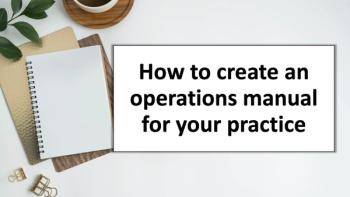
High Tech, Family Touch
Practice of the Year 2005 Runners-Up: Roswell Pediatric Center, P.C.
For practices that still need to be convinced an EMR can mean significant savings and efficiencies, look no further than Roswell Pediatrics' practice administrator Nancy Babbitt.
For example, a pre-EMR chart audit showed 18.3 percent of point-of-care procedures never made it to the superbill, amounting to an estimated $143,500 in lost revenue. Today, what's performed gets billed - and accurately, thanks to more consistent charge capture and on-target coding (99214s increased by 50 percent within one year). "We have more than offset our expenses on the EMR," says Babbitt.
When the EMR first went live in 2000, Babbitt was content to let the physicians get used to the technology and learn the basics. Eventually, she began to show them how the EMR could affect the bottom line. Seeing, in hard dollar amounts, what they could have billed versus what was actually billed was a real eye-opener, she says.
Linking CPT codes with procedures and accurately capturing charges at the point of care is a huge boon. "The physicians ... don't remember 11,000 CPT codes and what the billing rules are. If they do a lab test they don't always remember to charge a venipuncture," Babbitt explains. Now, "every time we do a vaccination it automatically bills the admin code for us. So the doctors and nurses don't have to remember to check two things on the superbill. Those things just added up."
The EMR also meant a reduction in staffing and related personnel costs adding up to about $160,000 per year. In addition, there's been a significant decrease in staff turnover since the EMR was implemented. Babbitt attributes that to a better, more efficient work environment. "I think as frustrating as technology can be sometimes ... it makes your workday a lot more pleasant. And ... you're getting a lot more done ... ."
Of course, tech support is integral, and those costs can add up. Roswell Pediatrics was fortunate to identify an employee suited to the task. "We wanted to train someone to be our 'superuser' on [the EMR] to assist with all the training when we went live," says Babbitt. One of the nurses with a knack for technology fit the bill.
'Parents Love It'
What Roswell Pediatrics didn't expect was that the EMR, from Noteworthy Medical Systems, would be so important to their patients. "Parents just love that we can find their child's chart" even if they call after hours or come in on a Saturday, says Babbitt, noting that with three locations and 40,000 patients, a lot of time was wasted looking for charts pre- EMR. "I hadn't realized the value of that before we started getting feedback."
Parents also love the customized patient education materials the EMR provides. For example, an asthma diagnosis can be overwhelming, with all the information parents need to absorb, says Babbitt. "Now they walk out with a one-page ... Asthma Action Plan that's tailored for that child, that day. And you just can't put a value on that."
The practice does place value on bringing a bit of fun into an otherwise high-energy and high-volume workplace.
To liven up staff meetings, they came up with a "Family Feud"-style game to test their knowledge of, say, HIPAA.
The staff also enjoys quarterly "Massage Mondays" when free 10-minute chair massages are offered. Even the physicians get into it. One of the doctors told Babbitt, "This is the best thing we've ever done; I have never seen so many people in a good mood on a Monday."
- Abigail Green
This article originally appeared in the November/December 2005 issue of Physicians Practice.
Newsletter
Optimize your practice with the Physicians Practice newsletter, offering management pearls, leadership tips, and business strategies tailored for practice administrators and physicians of any specialty.




